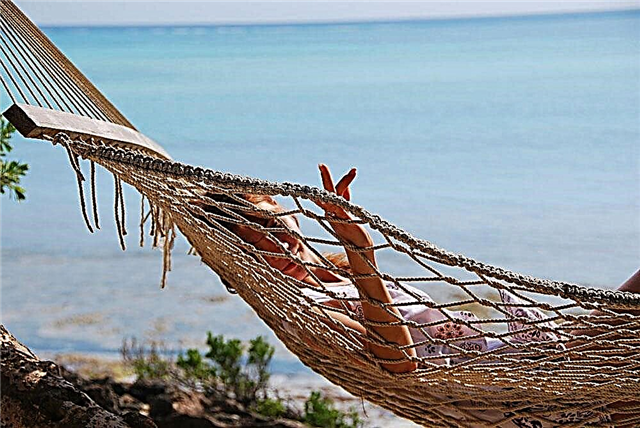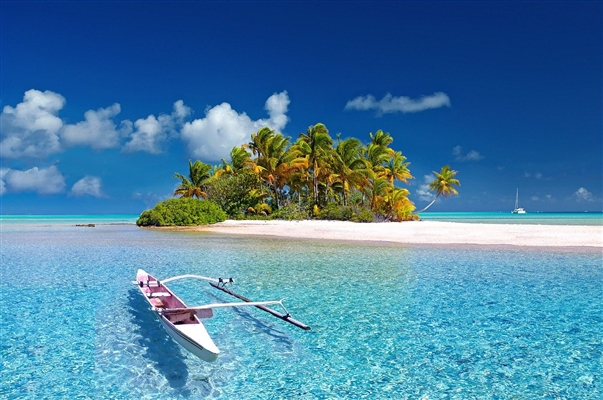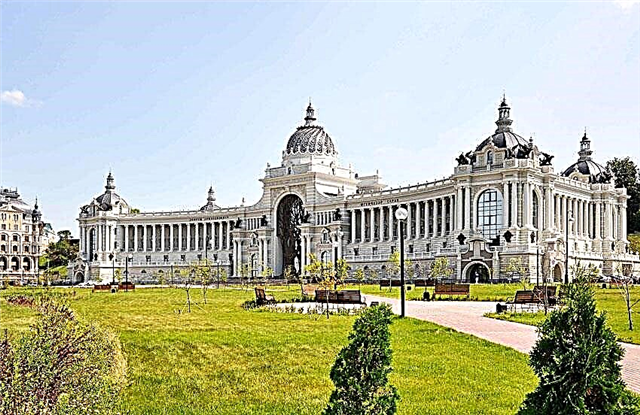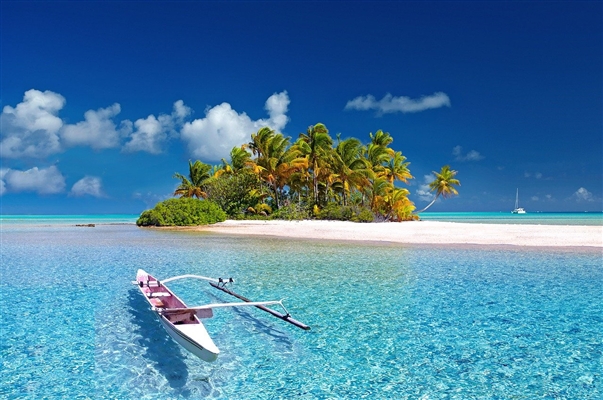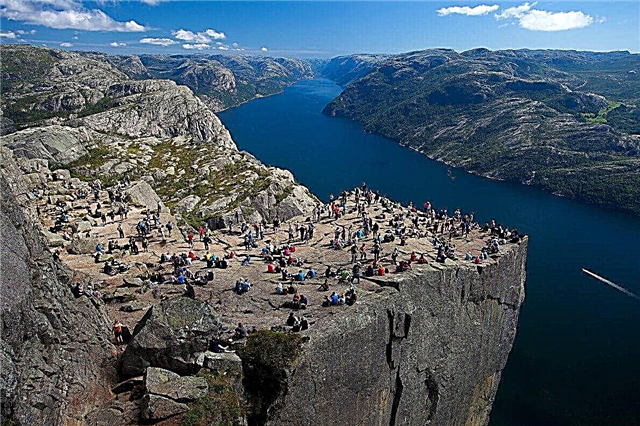The Norwegian fjords are a real fairytale land and the dream of every traveler who prefers natural landscapes to man-made attractions. They are very diverse and not alike. The bays of the western and central coasts of the country are sections of the sea sandwiched between sheer cliffs, framed in the emerald green of the coastal slopes and the crystal purity of rumbling waterfalls.
The wide expanses of water at the eastern end are an endless expanse that turns into the landscapes of the inhospitable northern tundra. The fjords are the hallmark of Norway, its pride and an inexhaustible source of income from numerous tourists who want to take a cruise or walk along the coast at all costs to admire the incredible beauty and ingenuity of nature, which was very generous to these places.
The most beautiful fjords in Norway
Geiranger fjord
An extended 15 km bay that is an offshoot of the larger Sturfjord located in the Møre og Romsdal region (fylke). It is surrounded by sheer cliffs reaching a height of 1.5 km, glaciers and wooded slopes with numerous water cascades. The main natural attractions of the fjord are the waterfalls with the romantic names Bridal Veil, Bridegroom and Seven Sisters.

Lysefjord
The Rüfühlkevegen road leads to the Lysefjord, which is particularly picturesque, but the best way to get to the bay is by cruise ship, whose route runs along the Kjerag and Preikestolen. The Lysefjord is one of the most popular and most visited due to its accessibility. It cuts into the coast for 42 km, the depth in different places fluctuates in the range of 13-450 meters.

Sognefjord
The bay is often called the "King of the Fjords" because of its incredible size: more than 200 km in length and more than 1 km in depth. This bay is the second largest in Europe. It has dozens of small and large branches, in the depths of which small villages and picturesque mountain slopes are hidden. They are covered with dense forests, turning into snow-capped peaks, shining brightly in the piercing rays of the northern sun.

Aurlandsfjord
One of the sleeves of the giant Sognefjord. Its length is relatively small - only a couple of tens of kilometers, but in beauty it may be superior to its counterparts. Along the coast, you can ride an inflatable boat, walk or ride a mountain bike to fully enjoy the panoramic view of the bay - a similar service is provided by many travel companies.

Nэрrøi Fjord
This fjord is listed by UNESCO as one of the most picturesque in Norway. It can be reached by the Flåm Railway, which makes sharp bends in the mountains. During the trip, you can also enjoy unforgettable views of waterfalls and snow-capped peaks. The popular cycling trail called the Digger's Road and the Stalheimskleiva hiking trail are nearby.

Hardanger fjord
The second largest bay in Norway, which is almost 100 km smaller than the Sognefjord. It is also divided into many smaller coves with indented shores. Hardanger stretches along the borders of 13 fühlke districts, fish farms and farms where salmon and rainbow trout are raised, as well as industrial enterprises are located near the water. Orchards bloom here in spring. Tourists are ready to accept numerous hotels located in picturesque places.

Nordfjord
The fjord is located in the central part of the coast. A motorway runs along its banks, which in the Bürcelo region dives under the Jostedalsbreen glacier. This place has considerable tourism potential due to its good accessibility. Passenger ferries run along the bay, so you don't have to book an expensive excursion to enjoy its beauty.

Trondheims fjord
A large fjord with a length of about 130 km, located closer to the western part of the coast. The bay was named after the city of Trondheim. There are three islands within the water area: Teutra, Itterøy and Munkholmen, which at different times housed a monastery of the 11th century, fortifications of the 17th-19th centuries, as well as the German air defense of the Second World War. Shipyards of oil and shipbuilding companies have been built on the shores of the fjord. Even in the Viking Age, an important sea route ran here.

Oslo fjord
The fjord in the north adjoins the capital of the country, therefore, to see the famous beauty of the Norwegian bays, you do not have to travel hundreds of kilometers. And although it is inferior in beauty to other fjords, it has a developed transport system, habitable shores and many picturesque corners, which will not be difficult to reach. More than 40% of the country's population lives within an hour's drive from here.

Altafjord
Bay of the Norwegian Sea, stretching for almost 40 km. In some places, its shores are somewhat reminiscent of the classic lake region of the northern regions of Russia: there is a lot of forest and grass up to the waist, in other areas there are moss-covered rocks and hills of the Far East, or even tundra, along which deer roam. In the city of Alta, located on the coast, you can admire the futuristic cathedral of the Northern Lights. On the rocks surrounding the fjord, there are cave paintings that attract the attention of tourists from all over the world.

Troll fjord
The fjord is associated with a legend about a fabulous troll, which is not difficult to guess from the name, which sits on the top of one of the coastal rocks and protects its possessions from encroachments. Indeed, during the cruise, you can see a stone formation that vaguely resembles a clumsy figure. In some areas, the trollfjord is so narrow that it seems as if you can reach the shore with your hand.

Jössing Fjord
A small fjord only 2 km long and no more than 250 meters wide, located in the southwest of Norway. Tourists are attracted here by picturesque landscapes, unusual houses built right under the rock, as well as a tunnel under the mountain that descends to the water. In 1940, there was an incident here with the ship Altmak, which began the capture of Norway by the Wehrmacht.

Lyngenfjord
The bay is located in the north of Norway east of the town of Tremse. This is a real kingdom of ice, snow and the incomparable Northern Lights. From the shores of the Lyngenfjord, a magnificent view of the Arctic mountains opens up - the so-called Lyngen Alps. Tourists sailing along the coast are always amazed by the cold severity and inaccessibility of these places. The bay is also known as a popular fishing spot for giant cod and halibut.

Varanger fjord
The fjord is located in the eastern part of Norway on the border, part of its shores belong to Russia. There are a lot of fish of different breeds here. Water influenced by the Gulf Stream freezes only in the harshest winters. Of course, to see the most picturesque part of the bay, it is necessary to cross the border, since within the borders of our country the coast of the fjord is rather smoothed out.

Porsanger fjord
The fjord is a bay in the Barents Sea, located in the east of Norway and characterized by rugged landscapes. Its constantly foggy banks are surrounded by gentle hills covered with sparse subarctic vegetation. There is a real tundra around - an almost bald plain, where snow does not melt in deep depressions even in summer. These places are beautiful in their own way, it is not for nothing that there are hotels and parking for tourist trailers.

Westfjord
The Westfjord, probably, cannot be considered a fjord in the classical sense, to which tourists going to Norway are accustomed. Rather, it is a wide open bay that merges smoothly into the Norwegian Sea.Cod has been fished here since the Middle Ages. In winter, killer whales often swim into the territory of the fjord, which travelers come to see. The climate in the vicinity is rather harsh. It rarely does without piercing winds.

Quenangen Fjord
When you get to the Kwenangenfjord, you immediately feel the feeling of a lack of civilization. It seems that there is only sea, stones, sun and snow around. The bay has a length of more than 70 km, its shores are completely covered with rocks, practically devoid of vegetation (only moss and low-growing grass). On a polar day, the sun shines brightly here, flooding the surroundings with orange light, which adds to the feeling of unreality.

Ufutfjord
The fjord is located far beyond the Arctic Circle, so the local climate is suitable only for the most seasoned travelers. The bay is known for the fact that during the Second World War, several major battles took place on its shores. The cruisers and destroyers lying at the bottom serve as a reminder of this time, which are gladly examined by divers who are not afraid to dive into the inhospitable northern waters.

Sturfjord
The strait, most of which is covered with glaciers, is the kingdom of polar bears and walruses. The places are completely wild and incredible: you can endlessly admire the shores dressed in eternal snow, drifting ice floes, and noisy flocks of eiders. However, it will hardly be possible to go ashore - according to the rules of the reserve located here, ships can swim no closer than 500 meters so as not to frighten the animals.

Isfjord
The shores of the bay can be considered the most densely populated in Svalbard, as the largest villages of the archipelago are located here: Pyramida, Longyearbyen, Barentsburg. Isfjord is a multi-colored cliff (variety is achieved due to different shades of moss covering the slopes) against the background of blue water, sky-colored ice blocks and endless expanses of polar tundra, merging with the horizon.



